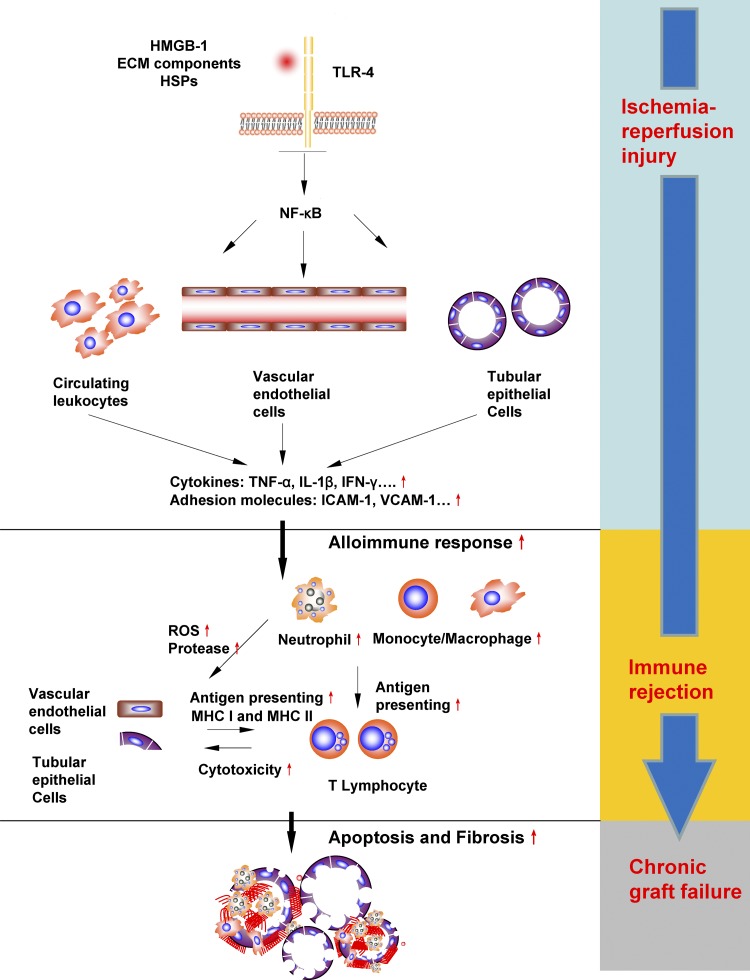Fig. 3.
Effects of activation of TLR-4 in rIRI and associated consequences in renal grafts. Activation of TLR-4 on leukocytes, vascular endothelial cells, and tubular epithelial cells leads to increased productions of proinflammatory cytokines and adhesion molecules, which elicits a strong inflammatory response in both the renal microvasculature and the interstitial space. This exacerbates the kidney damage already initiated during the ischemic phase through massive leukocyte infiltration and cytotoxicities. Increased endothelial cell and epithelial cells damages accelerate the antigen processing and presenting, and therefore immunogenicity is increased and immune rejection is promoted. Severe damaged tubules and vasculature would promote fibrosis, and all these molecular events predispose to chronic allograft failure

